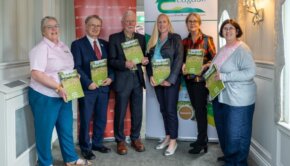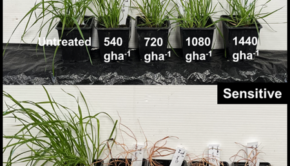Soil test results indicate early signs of soil fertility decline

Despite good progress being made in relation to soil fertility improvements form 2015 to 2019
8 September 2022
The 2021 soil fertility results indicate that soils with optimum pH, Phosphorus (P) and Potassium (K) fertility decreased between 3 to 6 % compared to 2020. This is according to a recent review of soil samples taken by Teagasc in 2021.
It found that the number of soil samples taken across all farming enterprises increased in 2021. Over this period, 62% of soil samples came from dairy farms, 25% from drystock farms and 11% from tillage farms. Overall soil sampling number have increased by 13% compared to 2020 with the largest increase happening on tillage farms.
Soil pH levels decreased by 10 to 13% across all three-farm enterprises. Results in 2021 now show that 47% of dairy farms had soil pH below the optimum of pH 6.3. In the other enterprises, soil pH was below optimum in 53% and 39% of soil samples taken on dry-stock and tillage farms, respectively. This shows that there is still a large requirement for lime on Irish farms despite record levels of lime applied in 2021.
Dr Karl Richards, head of the Teagasc Soil, Environment and Land use Research centre said that increasing soil pH (where appropriate) reduces nitrogen fertiliser requirements by 50-70kg Nitrogen per hectare per year, improves clover establishment and improves nutrient use efficiency. Optimal soil pH has also been shown to directly reduce greenhouse gas emission from fertiliser. Improving soil fertility needs to be prioritised going into this winter, to improve clover establishment and reduce expensive fertiliser demands in 2023.
Over the last two years, the number of soil samples from grassland with optimum P (Greater than Index 3) have shown a decrease, while soil K levels have remained stable over the same period. On tillage farms, a similar trend is emerging in 2021, with a drop in soil P levels and an improvement in soil K levels. Close attention is now required to manage soil fertility and prevent a reverse of fertility improvements achieved in previous years.
“These trends could indicate early signs of declining soil fertility levels nationally,” said Dr David Wall, Teagasc Soil Fertility Researcher at Johnstown Castle. “Unfortunately, these downward trends coupled with reduced fertiliser (P & K) use in 2022 will likely lead to further running down of soil nutrient reserves, which will impact negatively nitrogen use efficiency and crop yields in the coming years. Farmers should take heed of this early warning in order to put plans in place to protect the productivity and long-term sustainability of their farming business.”
During the period 2015 to 2019, good progress was made across all farming enterprises in relation to soil fertility improvements. In the last two years both dairy and drystock farms are showing a combined 5% drop in soil fertility. On tillage farms, a similar trend is emerging in 2021 with a 6% decrease in soil fertility.
Mark Plunkett, soil and plant nutrition specialist with Teagasc, said: “Maintaining good soil fertility is the cornerstone of farm production systems, is key to utilising soil and applied nutrients as efficiently as possible and reducing emissions. Now is the time to take action, to use this soil sample information and to develop a plan to manage soil fertility to ensure good grass and crop production in 2023.”
Pat Murphy, head of environment knowledge transfer in Teagasc said: “with artificial fertiliser costing almost three times as much as two years ago, preparing and implementing a nutrient management plan has never been more important. Plans should be based on up to date soil samples, should focus firstly on correcting pH, secondly on getting the most from slurry and manures by identifying where it is needed most, and thirdly select a suitable P and K fertiliser blend to maintain farm soil fertility.”



 Print
Print










Fans 0
Followers